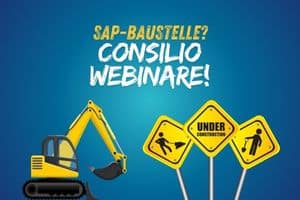Smart Manufacturing : Fully automated optical inspection and providing solutions in different markets, industries and applications is what K|Lens GmbH describes as its vision with its Industrial Solution division. Founded in Saarbrücken in 2016 as a spin-off of the Max Planck Institute for Informatics, K|Lens employs around 15 experts in sensortechnology and software development. autoregion international spoke with Stefan Beinkämpen, Managing Director and CEO of the company and responsible for strategy and business development.
Mr. Beinkämpen, you are the managing director of K| Lens GmbH.
Explain to us in just one sentence; what does K| Lens?
- „we bring machine vision in process technology “
- Specializing in machine learning, we supply sensors, engineering, and artificial intelligence – from a single source for industrial applications.
What advantages do you see for your customers through the use of state-of-the-art 3D optical inspection?
We all know production lines that statistically evaluate product quality with a process capability index. In the ramp-up and escalation phase also combined with manual, subjective visual inspection. This no longer corresponds to the state of the art in quality management, because it has three major disadvantages:
- indirect, statistical testing
- high personnel costs
- insufficient documentation
Modern machine vision with artificial intelligence offers great potential and clear advantages. We do not replace the existing quality management, we complement the open flanks of the process according to the state of the art. This means:
- Our customers rely on 100% in-line control directly in the production process over the entire product life cycle and thus on continuous quality management.
- Our customers transform manual and subjective visual inspections into automated and objective inspections and significantly improve their process reliability.
- Our customers create data sets for every machine vision product, including environmental and process data, and document products and components holistically.
The automotive industry is currently going through a difficult transformation process, which is placing a heavy financial burden on OEMs and suppliers, how does the investment in machine vision, deep learning and 3D optical inspection systems pay off for your customers?
The advantages already shown pay off directly for our customers.
– less human resources at the visual workstations reduce process costs.
– less incorrect classifications from subjective manual inspections reduces scrap costs.
– consistent productdocumentation improves the defense against defect- and warrantyclaims.
We also offer solutions for our customers that do not require any investments. Large companies such as ThyssenKrupp are already leading and offering ” pay per part” market solutions. Our customers can change investment costs (CAPEX) directly into production costs per piece (OPEX). Sample calculations have shown that the costs with a automated optical visual inspection versus a manual visual inspektion can be halved; then 50% of the savings go to our “pay per part” concept and 50% of the savings remain with our customer, a real win-win situation.
You talked about state-of-the-art 3D machine vision, machine learning and artificial intelligence (AI). An online search for AI yields about 30 million entries. It feels like getting AI around every corner – what do you do differently?
Admittedly, that’s the impression you can get. A few pictures taken with the mobile phone and the AI solves everything else as if by magic. Unfortunately, computer vision is not so simple. On the one hand, an AI does not play Champions League without training, on the other hand, the quality of the input data is elementary. Here we differ significantly from the competition, as we define the project with our customers and then we develop a solution, so we look for the solution to the problem and not the problem for our solution. With our experience in 3D machine vision, our Multiview AI and light field technology, we do what matters. We create data sets that are optimized for machine reading and achieve really meaningful results for our customers. This can include optimizing sensors to generate high-quality input data, developing them and then patenting them accordingly.
Mr. Beinkämpen, you have customers from the automotive, aviation, medical technology, and other industries, can you show us how your technology works by using a concrete example from the automotive industry?
Let’s talk about electromobility. Where drive shafts and screws in the vehicle installed in the past, we now see cables and plugs. Plug connections from the Ambiente Light module to the electric traction motor have become complex products in vehicles. The tests are extensive; solder connection, position of plug pins, quality of injection molded housing, everything should be done in one test, with any plug size. This test in the automotive industry initially seemed hardly feasible. Our K|Lens experts have solved the task and evaluate a three-dimensional image successfully, qualitatively and quantitatively in the supplier process.
Thank you for the conversation.





